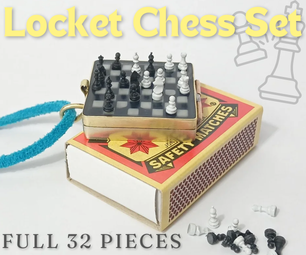Introduction: How to Make Colour Changing Paint
In this tutorial I am going to teach you how to make a colour changing paint. On this occasion, I have chosen to create a paint that changes colour with temperature (thermochromic).
There are so many applications in which thermochromic coatings can be used. Some of these include, colour changing t-shirts, colour changing posters, colour changing birthday cards, promotional items and educational products.
Step 1: Obtain the Correct Materials
Here are the items you will need to make 'colour changing paint' :
- SFXC Thermochromic Free Flowing Powder (red 31C)
- SFXC Compatible Binder
- SFXC Fluorescent Pigments Yellow
- SFXC Dispersing Agent (for thermochromic powder)
- A Glass Muller
- A Frosted Glass Plate
- A Measuring Cup
- Safety Gloves
- Safety Goggles
- Safety Mask
The volumes and quantities vary depending on the amount of paint you chose to make. I used the following:
- 40ml SFXC Compatible Binder
- 2g SFXC Thermochromic Free Flowing Powder
- 3g SFXC Fluorescent Pigments Yellow
- 10ml SFXC Dispersing Agent
Mixing Ratio: 10% Colourant (pigment) into 90% Binder + Dispersing Agent
Here are some online stores that will supply you with good quality ingredients and accessories:
http://www.cornelissen.com/pigments-gums-and-resin...
I have chosen to create a colour changing paint that turns from orange to fluorescent yellow when it reaches 31 degrees Celsius. There are hundreds of combinations of colour, so please drop me a comment if you would like a different colour effect.
I will be adding more combinations shortly.
Step 2: Mix the Dispersing Agent & the Binder With the Fluorescent Pigments
Now you have all the correct products you are ready to start making your 'colour changing paint'
Mix the dispersing agent, binder and fluorescent pigments together in the measuring cup. Make sure you use protective equipment and an old pair of clothes as this step can get messy.
Step 3: Empty the Mixed Solution Onto the Frosted Glass Surface
Once the binder, dispersing agent and fluorescent pigments are mixed thoroughly, empty the contents onto the frosted glass plate.
Step 4: Add the Thermochromic Pigments
Add the thermochromics pigments to the mixed solution. You can use weighing scales to ensure the correct amount is used. This will also help you ensure the colour is the same when/if you make another batch.
Step 5: Mill the Products Together Using the Glass Muller and Plate
Once you have added the thermochromic free flowing powder you are ready to get mixing.
If you do not have a glass Muller and Plate, I recommend using a blender on a gentle speed setting. Do not use the blender from your kitchen as some of the chemicals may remain in the blender after it is cleaned. These chemicals could migrate into food or dink. Please be safe when using a blender.
Step 6: Empty the Milled Solution Into a Container
Once all the parts are mixed together you have ready to use colour changing paint!
#Made by you
Step 7: Get Creative!
Now you have a ready to use colour changing that can be applied to wood, textiles, board and paper.
When you apply heat you will see the coating turn from orange to fluorescent yellow.
Be carful when using any items that create heat. Please be safe.
Please leave a comment if you would like more combinations or if you need any guidance.
HAVE FUN! BE COOL! BE SAFE







